Child Safety in the Kitchen - What you Need to Know
When it comes to cooking, the kitchen is often seen as the heart of the home, bustling with activity and delicious aromas. However, it can also be a dangerous place for little ones if proper precautions aren't taken. As parents, we want our children to be involved in the cooking process, but safety must come first. This article discusses essential strategies and tips for ensuring child safety in the kitchen, providing parents with the knowledge to create a secure cooking environment for their children. By understanding potential hazards and implementing effective safety measures, we can turn the kitchen into a fun and safe space for our kids to explore and learn.
Identifying potential hazards in the kitchen is crucial to keeping our children safe. The kitchen is filled with items that can pose risks, and being aware of these dangers is the first step in prevention. Common hazards include:
- Sharp Objects: Knives, scissors, and even peelers can cause serious injuries if not handled properly.
- Hot Surfaces: Stoves, ovens, and even countertops can reach dangerously high temperatures, leading to burns.
- Electrical Appliances: Mixers, blenders, and other gadgets can be hazardous, especially when children are curious about how they work.
By recognizing these hazards, parents can better prepare their children for a safe cooking experience. It's essential to create awareness about these dangers and teach kids how to navigate the kitchen responsibly.
Assigning age-appropriate tasks can foster independence while ensuring safety. Children can learn valuable skills in the kitchen, but the activities they engage in should be suitable for their age and maturity level. Here’s a breakdown of suitable kitchen activities for children of different ages:
Toddlers can participate in simple, supervised tasks that engage their interest without exposing them to danger. Activities such as washing vegetables, stirring ingredients, and even tearing lettuce can be both fun and safe. These tasks not only keep them entertained but also help them develop a sense of responsibility.
Effective supervision is key when toddlers are in the kitchen. Parents should always be within arm's reach, ready to step in if necessary. Consider using these strategies:
- Set up a designated area for your toddler where they can safely engage in activities.
- Use a sturdy step stool to give them a better view while keeping them supervised.
- Encourage them to ask questions about what they're doing to foster communication.
Using child-friendly tools can enhance safety in the kitchen. Look for utensils designed specifically for young children, such as:
- Plastic knives that can cut soft foods.
- Measuring cups with easy-to-read markings.
- Non-slip cutting boards to keep items steady.
These tools not only make cooking safer but also more enjoyable for your little ones.
As children grow, they can take on more complex tasks in the kitchen. Cooking activities suitable for older children might include chopping vegetables, measuring ingredients, or even following simple recipes. It's important to emphasize safety measures, such as using knives properly and being cautious around hot surfaces. Teaching them these skills can boost their confidence and independence in the kitchen.
Equipping the kitchen with safety tools is vital for protecting children. Must-have safety equipment includes:
- Childproof Locks: Use these on cabinets and drawers to keep dangerous items out of reach.
- Oven Mitts: Teach children to always wear mitts when handling hot items.
- Fire Extinguishers: Ensure you have one readily accessible in case of emergencies.
Having the right tools can significantly reduce the risk of accidents in the kitchen.
Childproofing the kitchen involves various techniques to secure dangerous items and create a safer cooking environment. Here are some practical tips:
- Store sharp knives and tools in a locked drawer or high cabinet.
- Keep cleaning supplies and chemicals out of reach or in childproof containers.
- Use stove guards to prevent little hands from reaching hot burners.
By implementing these childproofing strategies, parents can make the kitchen a safer place for their children to explore.
Being prepared for emergencies is crucial in any kitchen. Parents should take essential steps to ensure they are ready to handle kitchen-related accidents involving children. Here are some recommendations:
- Keep a first aid kit stocked and easily accessible.
- Educate children on what to do in case of a fire or injury.
- Practice emergency drills, so everyone knows their role in a crisis.
Preparation can make a significant difference in how effectively you respond to an emergency.
Q: What age can children start helping in the kitchen?
A: Children can start helping in the kitchen as early as toddler age with simple tasks. As they grow older, their responsibilities can increase.
Q: How can I ensure my child stays safe while cooking?
A: Always supervise your child, provide age-appropriate tasks, and equip your kitchen with safety tools and equipment.
Q: What should I do if my child gets injured in the kitchen?
A: Remain calm, assess the injury, and provide first aid if necessary. Always have a first aid kit handy and know when to seek medical attention.
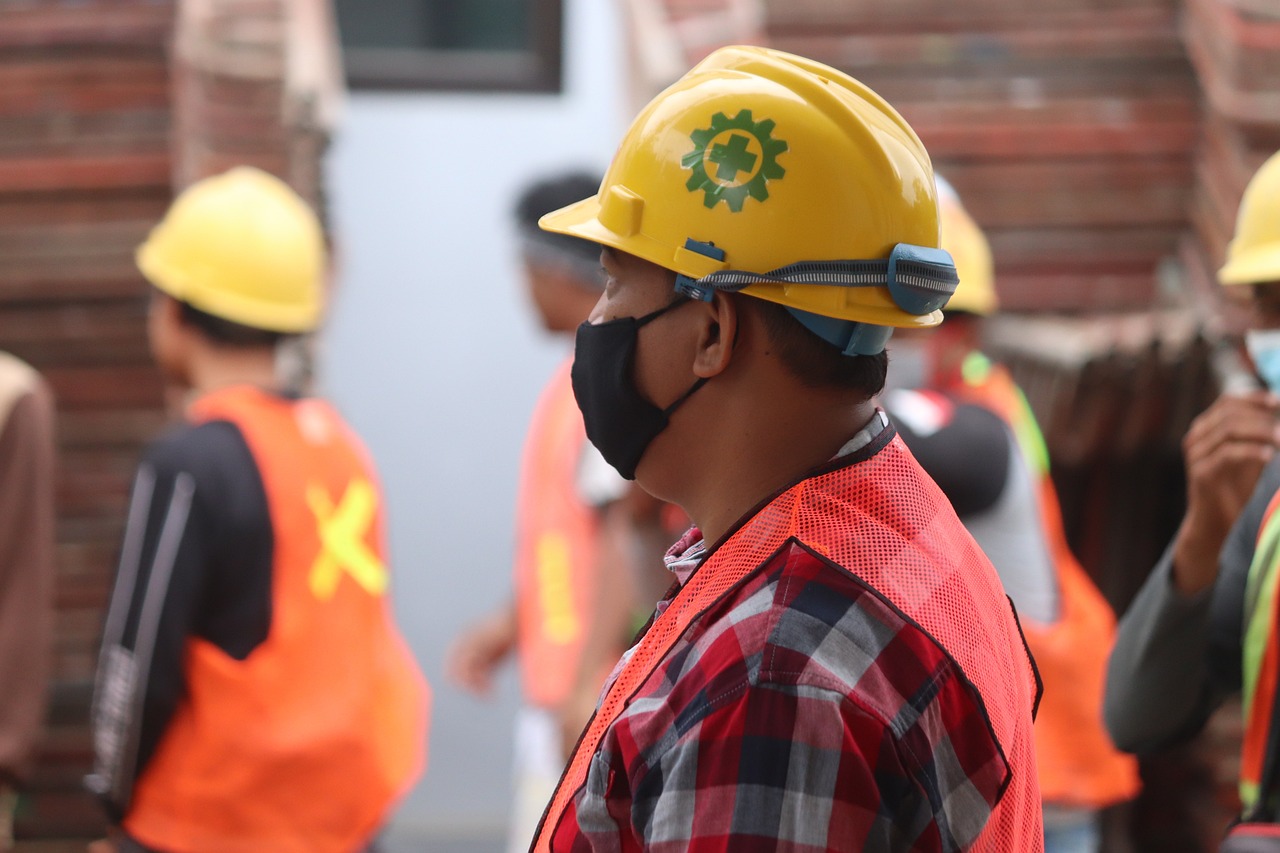
Understanding Kitchen Hazards
When it comes to our kitchens, they are often bustling with activity and delicious aromas. However, they can also be a **hotbed of potential hazards** for children. Understanding these dangers is the first step in creating a safe cooking environment. Think of your kitchen as a treasure trove of culinary delights, but hidden within are pitfalls that can lead to accidents if not properly managed.
Some of the most common hazards include:
- Sharp Objects: Knives, peelers, and even scissors can pose a significant risk. Children are naturally curious and may want to explore these tools without understanding the dangers they present.
- Hot Surfaces: Stoves, ovens, and even countertops can reach scorching temperatures. A moment of inattention can lead to burns that could have been easily prevented.
- Electrical Appliances: Mixers, blenders, and other kitchen gadgets can be both fascinating and dangerous. The cords and moving parts can create a risk of entanglement or electric shock.
It's essential to recognize that while we want to encourage our children's interest in cooking, we must also be vigilant about these hazards. For instance, a child may be excited to help with dinner but may not realize that reaching for a knife or pulling on a hot pot can lead to serious injuries. By identifying these hazards, parents can take proactive steps to mitigate risks.
Additionally, consider the layout of your kitchen. Are sharp objects stored within reach of curious little hands? Is the stove located in a place where a child can easily access it? These questions are vital to ensuring a safe cooking environment. Remember, it’s not just about teaching children to avoid danger; it’s also about creating an environment where those dangers are minimized.
In summary, understanding kitchen hazards is crucial for parents who want to foster a safe cooking experience for their children. By recognizing potential dangers and taking steps to reduce them, we can transform our kitchens from risky zones into safe and enjoyable spaces where children can learn and grow.
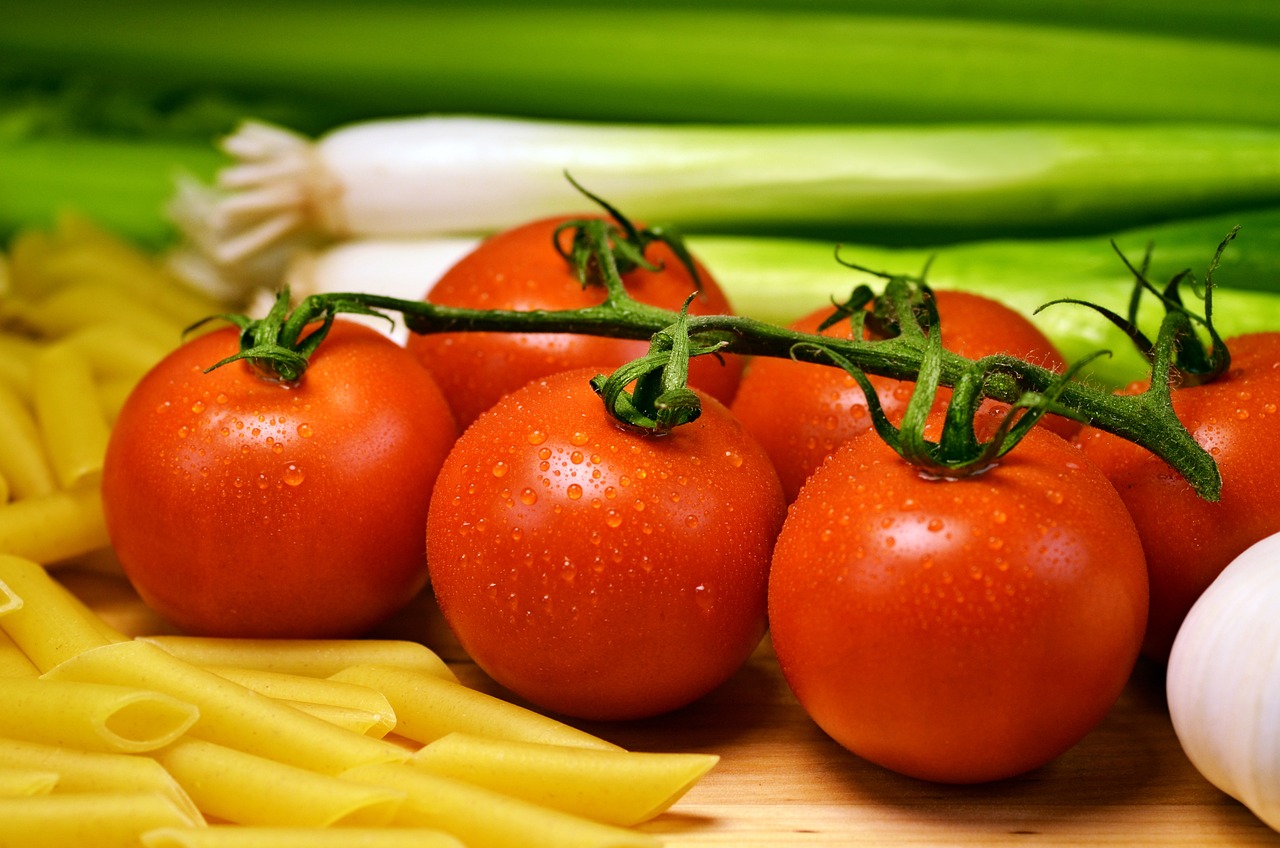
Age-Appropriate Kitchen Tasks
When it comes to involving children in the kitchen, age-appropriate tasks are essential not just for safety but also for fostering a sense of independence and responsibility. Imagine your little one, beaming with pride after successfully washing vegetables or stirring a pot of soup! These moments not only build confidence but also create lasting memories. However, it’s crucial to match the tasks with their developmental stage to ensure they are both safe and engaging.
For toddlers, the kitchen can be a magical place filled with colors, smells, and sounds. Simple activities like washing vegetables or stirring ingredients can be great starting points. These tasks require minimal supervision and allow toddlers to explore without the risk of serious injuries. For instance, when washing vegetables, you can teach them how to rinse under cold water, making it a fun learning experience about hygiene and food preparation. Similarly, stirring mixtures in a bowl can help them develop motor skills while keeping them at a safe distance from the stove.
As your child grows into the preschool and early elementary years, they can handle slightly more complex tasks. Activities such as measuring ingredients or mixing batter not only enhance their cooking skills but also introduce them to basic math concepts. You might find that they love to count out the cups of flour or estimate how many spoonfuls of sugar are needed. These tasks can be a great way to sneak in some educational fun while cooking!
Now, let’s not forget about older children. Once they reach the age of 8 or 9, they can start taking on more responsibility in the kitchen. Tasks like chopping soft fruits or making sandwiches can be introduced, provided they are supervised and taught the proper techniques. It’s all about building trust and confidence. You could even set up a mini cooking challenge where they can create their own sandwiches or wraps, allowing them to express their creativity.
As children progress, it’s important to discuss kitchen safety rules with them. For example, explain the importance of using oven mitts when handling hot items or the need to keep flammable materials away from the stovetop. By incorporating safety education into their cooking tasks, you’re not only teaching them how to cook but also how to do it safely. This proactive approach ensures that they develop good habits that will last a lifetime.
In summary, age-appropriate kitchen tasks are a fantastic way to engage children in cooking while ensuring their safety. By starting with simple, supervised activities and gradually introducing more complex tasks, you can create a nurturing environment that promotes learning and independence. Remember, the kitchen is not just a place for cooking; it's a space for bonding, learning, and creating cherished memories together!

Tasks for Toddlers
When it comes to involving toddlers in the kitchen, the key is to keep it simple, safe, and fun! Toddlers are naturally curious and eager to help, but their safety is paramount. By assigning them age-appropriate tasks, you not only foster their independence but also ignite their interest in cooking. So, what can your little ones do in the kitchen without putting themselves in harm’s way? Here are a few engaging activities that are perfect for tiny hands:
One of the safest tasks for toddlers is washing vegetables. It's a straightforward activity that allows them to get involved without the risk of sharp edges or hot surfaces. Just fill a bowl with water and let them splash around while rinsing off fruits and veggies. Not only does this teach them about cleanliness, but it also introduces them to different textures and colors. Plus, who doesn’t love a little water play?
Another great task is stirring ingredients. Whether it's a bowl of pancake batter or a pot of soup (with supervision, of course), toddlers can help mix things up. Use a sturdy bowl and a large spoon that fits their little hands. This is a fantastic way for them to feel included in the cooking process. Just be sure to keep an eye on them to prevent any spills or messes that might lead to slips!
Additionally, toddlers can assist in tearing up lettuce or breaking bread. These tasks require minimal skill and can be done safely with your guidance. It’s a great way to teach them about different foods while enhancing their motor skills. Just make sure to supervise closely, as even simple tasks can lead to surprises!
To ensure safety while they participate in these activities, effective supervision is crucial. You want to be nearby, ready to step in if needed, but also allowing them the space to explore. Consider using a kitchen stool that’s stable and at a safe height, so they can see what’s happening on the counter. This way, they feel included and engaged rather than just watching from afar.
In summary, involving toddlers in the kitchen can be a delightful experience when done safely. By assigning them simple, supervised tasks, you can nurture their curiosity and creativity while keeping them out of harm's way. Remember, the kitchen can be a magical place for children, filled with opportunities to learn and grow. So, why not let them stir the pot (literally) and be a part of your culinary adventures?
- What age is appropriate to start involving toddlers in the kitchen? Generally, you can start involving toddlers as young as 2 or 3 years old with simple tasks.
- How can I ensure my toddler stays safe while helping in the kitchen? Always supervise them closely, choose age-appropriate tasks, and use child-friendly tools.
- What are some other safe activities for toddlers in the kitchen? Besides washing and stirring, they can help with sorting utensils or setting the table.
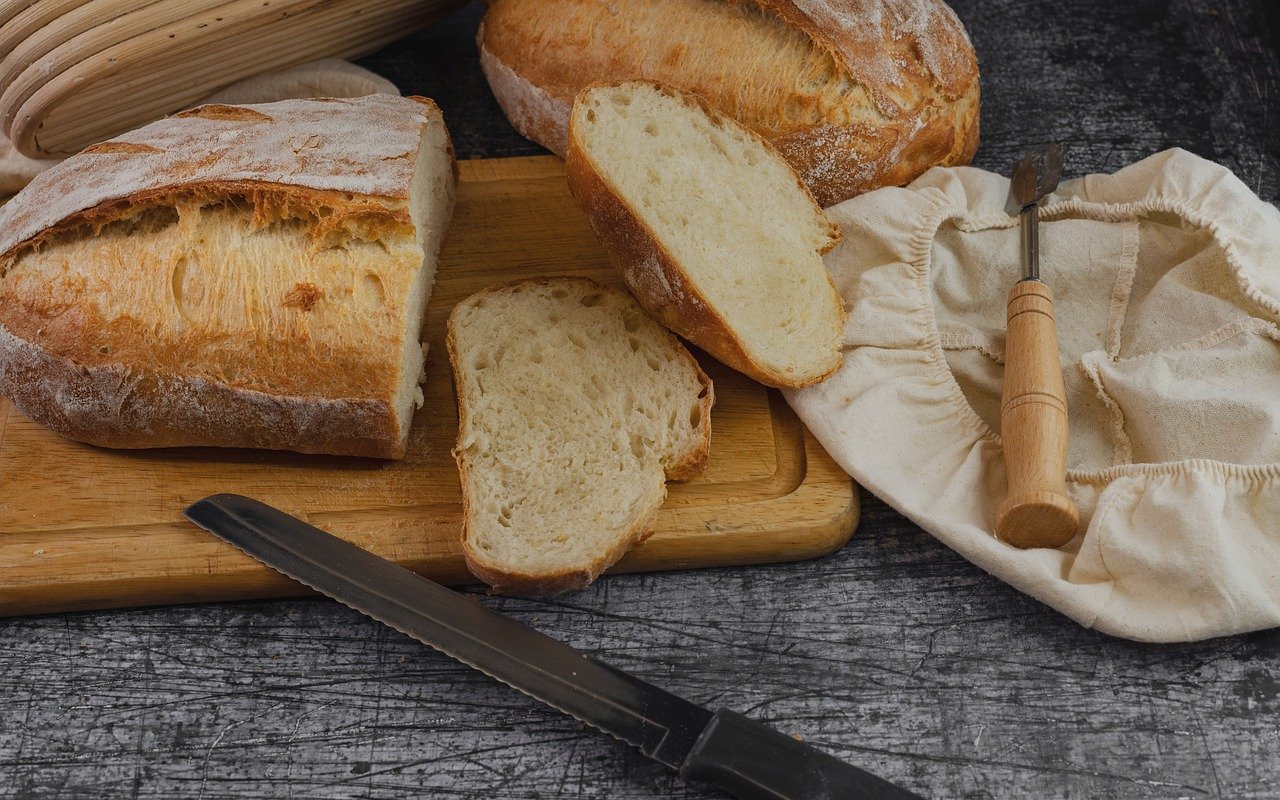
Supervision Techniques
When it comes to child safety in the kitchen, effective supervision is not just important—it's absolutely essential. You might be wondering, "How can I keep my little ones safe while they explore the exciting world of cooking?" Well, the answer lies in a combination of vigilance, engagement, and strategic positioning. First off, it's crucial to maintain a close watch on your children as they navigate the kitchen. This doesn’t mean you have to hover over them like a helicopter parent, but rather, you should be present and attentive. For example, if your toddler is stirring a pot, position yourself nearby, ready to step in if they reach for something dangerous.
Moreover, creating a safe space for your children to work in is key. You can achieve this by designating a specific area in the kitchen where they can engage in their cooking activities. This area should be free from any potential hazards, such as sharp knives or hot stovetops. By setting boundaries, you not only help keep them safe but also allow them to feel a sense of independence. Think of it like building a little fortress of culinary creativity where they can safely experiment.
Another effective technique is to involve your children in the cooking process actively. Ask them questions about what they’re doing, and encourage them to explain their steps. This not only keeps them focused but also reinforces their understanding of kitchen safety. For instance, if they’re washing vegetables, you could ask, “What do you think we should do if the knife is too sharp?” This kind of dialogue keeps their minds engaged and aware of safety protocols.
Lastly, consider using visual aids to enhance supervision. You might create a colorful chart that outlines the do's and don'ts in the kitchen, which can serve as a constant reminder for your children. Hang it at their eye level so they can refer to it easily while they cook. This not only empowers them to make safe choices but also adds an element of fun to their culinary adventures. Remember, supervision doesn’t have to be a chore; it can be an enjoyable part of your family cooking experience!
- What age should my child start helping in the kitchen? It's generally safe for children as young as 2 or 3 to start with simple tasks under supervision, such as washing vegetables or stirring.
- How can I ensure my kitchen is child-friendly? Use childproof locks on cabinets, keep sharp objects out of reach, and designate a safe cooking area for your children.
- What should I do in case of an emergency? Always have a first aid kit handy, know how to use a fire extinguisher, and teach your children basic emergency procedures.
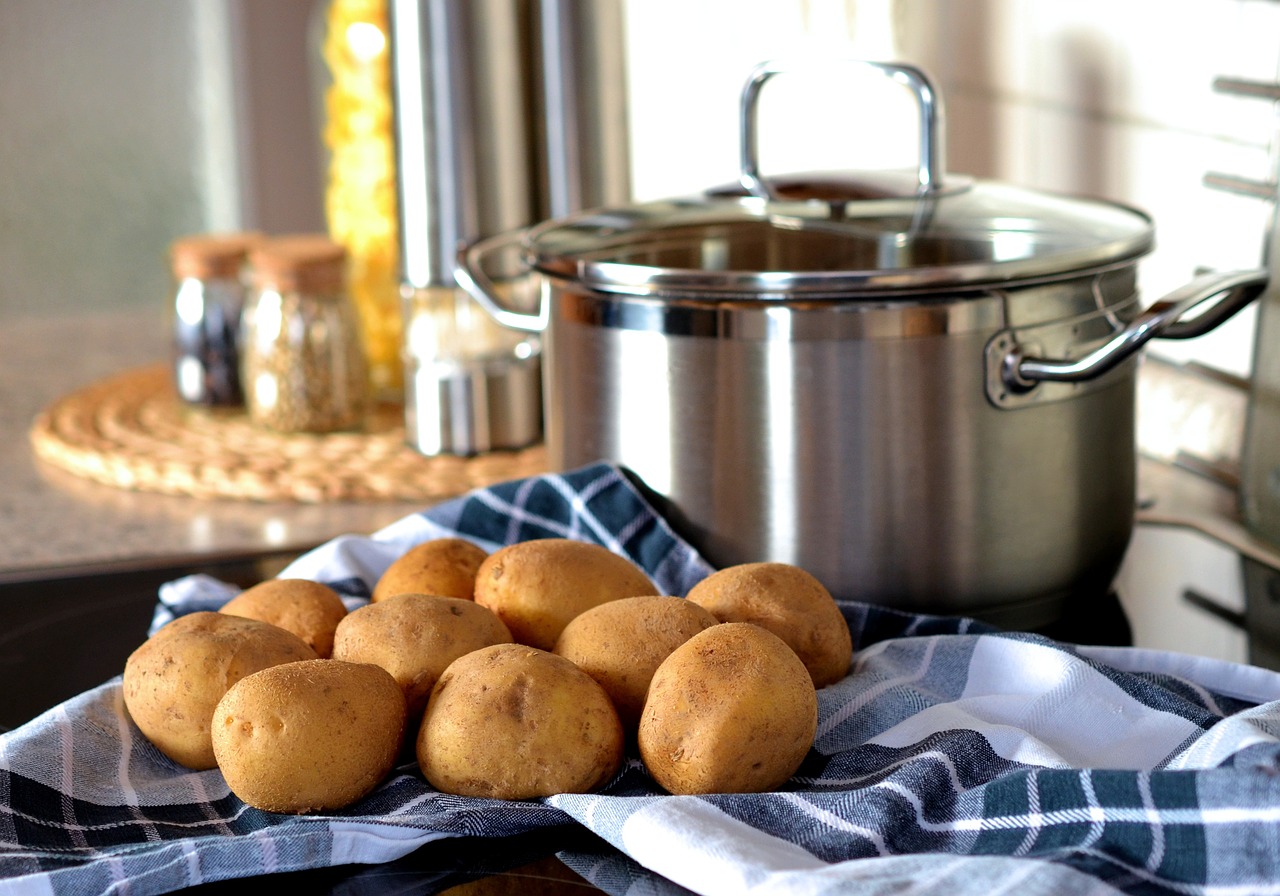
Tools for Toddlers
When it comes to involving toddlers in the kitchen, the right tools can make all the difference. Using child-friendly utensils not only enhances safety but also makes cooking a fun and engaging experience for little ones. Imagine a tiny chef standing on a stool, stirring a pot with a colorful spoon designed just for them! This not only boosts their confidence but also allows them to explore their culinary skills without the constant worry of accidents.
First and foremost, consider investing in soft-edged knives. These tools are specially designed for little hands and can help toddlers learn to chop soft fruits and vegetables like bananas or avocados safely. They may not slice through a carrot, but they can still get a feel for the action of cutting, which is a great introduction to cooking. Pair these with a sturdy cutting board that won’t slip around, ensuring a secure surface for your budding chef.
Another essential tool is a set of measuring cups and spoons. These not only teach toddlers about measurements but also allow them to participate in the cooking process by measuring ingredients. Look for brightly colored, easy-to-hold measuring tools that can withstand the occasional drop. This way, you won’t have to worry about breakage, and your child can focus on the fun of cooking.
Don’t forget about mixing bowls that are lightweight and easy to handle. A set of nesting bowls in various sizes can help toddlers mix ingredients without the fear of them toppling over. Additionally, consider using bowls with non-slip bottoms, which provide extra stability during mixing. This simple addition can prevent spills and keep the kitchen floor clean, allowing for a more enjoyable cooking experience.
Finally, introduce toddlers to fun, colorful aprons and oven mitts. These not only protect their clothes but also add an element of excitement to the cooking process. When your child wears their own little apron, they feel like a real chef, ready to take on any recipe. Make sure the oven mitts are designed for small hands, ensuring they can grip and hold hot items safely without burning themselves.
Incorporating these tools into your kitchen can create a safe and enjoyable environment for toddlers. Remember, the goal is to foster a love for cooking while maintaining their safety. With the right equipment, your little ones can learn valuable skills and have a blast in the kitchen!
- What age is appropriate for children to start cooking? Generally, children can start participating in the kitchen as early as 2-3 years old with simple tasks.
- How can I ensure my child is safe while cooking? Always supervise them closely, use age-appropriate tools, and teach them about kitchen hazards.
- What are some safe tasks for toddlers in the kitchen? Washing vegetables, stirring ingredients, and measuring dry ingredients are great starting points.
- Are there any specific tools I should avoid? Avoid sharp knives and heavy equipment that could easily injure a child.
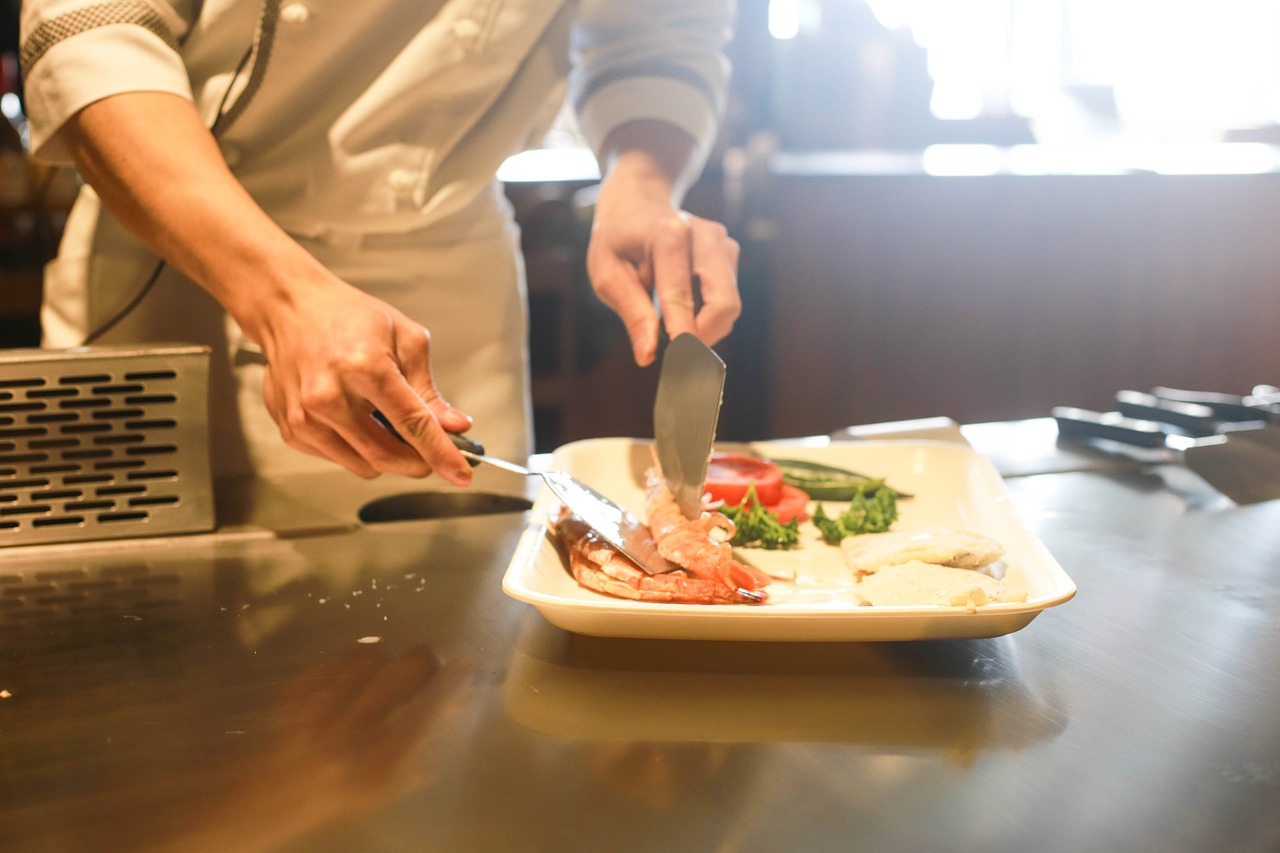
Tasks for Older Children
As children grow and develop their skills, it's essential to allow them to take on more complex tasks in the kitchen. Not only does this foster independence, but it also helps them learn valuable life skills. However, it's crucial to ensure that these tasks are age-appropriate and safe. So, what kinds of kitchen activities can older children engage in? Here are some ideas that will keep them involved while also ensuring their safety:
Older children, typically ages 8 and up, can start handling tasks that require a bit more responsibility. For instance, they can assist in meal preparation, which includes washing, peeling, and chopping fruits and vegetables. While they can use knives, it’s vital to provide them with child-safe knives designed for their age group. These knives can cut food without the risk of severe injury, making it easier for parents to relax while their kids are helping out.
Another engaging task for older children is measuring ingredients. This not only teaches them about cooking but also about math and precision. They can learn to read recipes, which enhances their reading skills and encourages them to follow instructions carefully. Just imagine the sense of accomplishment they’ll feel when they successfully bake a cake or prepare a family meal!
Additionally, older children can be entrusted with cooking tasks such as boiling pasta or sautéing vegetables. However, supervision is still necessary, especially when it comes to using the stove. A great way to teach them is to demonstrate the process first, explaining each step along the way. By doing so, you reinforce safety practices, such as keeping handles turned inward and using oven mitts when handling hot pots.
To make the kitchen experience even more enjoyable, consider creating a weekly cooking night where your children can choose a recipe to prepare. This not only gives them a sense of ownership but also allows them to experiment with different cuisines. Remember, the goal is to make cooking fun while instilling a sense of responsibility.
Here’s a quick summary of tasks suitable for older children:
- Washing and peeling fruits and vegetables
- Measuring ingredients
- Reading and following recipes
- Cooking simple dishes (with supervision)
By involving older children in these tasks, you’re not just teaching them how to cook but also providing them with essential life skills that will serve them well in the future. It's about building confidence and competence in the kitchen while ensuring that safety remains a priority. So, what are you waiting for? Get your older kids involved in the kitchen and watch them thrive!
Q: At what age can children start helping in the kitchen?
A: Children can start helping in the kitchen as early as age 2 with simple tasks, but more complex tasks can be introduced as they grow older, typically around age 8 and up.
Q: What safety measures should I take when my child is cooking?
A: Always supervise your child, use child-safe utensils, and teach them about kitchen hazards. Ensure they understand the importance of safety practices, such as keeping flammable items away from the stove.
Q: How can I make cooking fun for my kids?
A: Create themed cooking nights, let them choose recipes, and encourage creativity in the kitchen. Making it a fun and engaging experience will help them develop a love for cooking!

Essential Safety Equipment
When it comes to keeping your little ones safe in the kitchen, having the right safety equipment is absolutely crucial. Think of your kitchen as a mini battleground where potential hazards lurk around every corner, ready to surprise the unsuspecting. From sharp knives to hot stoves, the kitchen can be a dangerous place for children. To combat these risks, investing in essential safety tools is like arming yourself with a shield and armor. Here’s a rundown of must-have safety equipment that every parent should consider to create a safer cooking environment.
First and foremost, consider installing childproof locks on cabinets and drawers. These locks prevent curious hands from accessing dangerous items like knives, cleaning supplies, and even hot pots. Imagine a fortress where only the trusted can enter; these locks serve as your first line of defense. Additionally, using oven mitts is vital. They protect little hands from burns when reaching for hot dishes. It's like giving your child a superhero cape—making them feel invincible while keeping them safe!
Another essential piece of equipment is a fire extinguisher. Yes, it may seem a bit extreme, but being prepared for emergencies can make a world of difference. A kitchen fire can escalate quickly, and having an extinguisher on hand is like having a fire-fighting sidekick ready to swoop in. Make sure it’s easily accessible and that everyone in the household knows how to use it. You might even want to practice a fire drill with your kids, turning it into a fun learning experience!
Moreover, consider using non-slip mats near the sink and stove. These mats can prevent slips and falls, which are common kitchen accidents. Think of them as a safety net, catching your child before they can hit the ground. Lastly, investing in child-friendly utensils can significantly reduce the risk of injury. Look for tools designed specifically for little hands—these often have rounded edges and are easier to grip.
In summary, equipping your kitchen with the right safety tools is not just about preventing accidents; it’s about creating a space where your children can explore and learn without fear. When you combine these safety measures with your watchful eye, you create a nurturing environment that encourages your kids to engage in cooking while keeping them safe. Remember, the kitchen is a place of creativity and bonding, and with the right precautions, it can be a safe haven for your family.
- What are the best childproof locks for kitchen cabinets?
Look for locks that are easy for adults to operate but difficult for children. Magnetic locks are a great option as they can be installed out of sight. - How can I teach my child about kitchen safety?
Start with simple rules like "no running" and "always ask for help." Gradually introduce them to cooking tasks while explaining safety measures. - Is it safe to let my child use knives?
Only allow age-appropriate knives, such as plastic or child-safe options, and always supervise them closely while they learn. - What should I do in case of a kitchen fire?
Immediately evacuate the area and use your fire extinguisher if it is safe to do so. Always call emergency services if the fire is too large to handle.

Childproofing Techniques
Childproofing your kitchen is an essential step in creating a safe environment for your little ones. The kitchen, often considered the heart of the home, can also be a minefield of potential hazards. From sharp knives to hot surfaces, it's crucial to take proactive measures to minimize risks. One of the first steps in childproofing is to secure all dangerous items. This means storing knives, scissors, and other sharp objects in high cabinets or using magnetic knife strips that are out of reach of children. Additionally, consider using childproof locks on cabinets and drawers that contain hazardous materials such as cleaning supplies or glassware.
Another effective technique is to create a designated safe area within the kitchen where children can play or help out without being in harm's way. This could be a small table with safe utensils, pots, and pans that they can use to mimic cooking. By giving them a space to explore, you allow them to engage with the kitchen while keeping them away from the dangerous zones. It's also a good idea to use stove knob covers to prevent little hands from accidentally turning on the burners.
When it comes to the oven, consider investing in an oven lock. These locks can prevent curious children from opening the oven door while it's in use, thus avoiding potential burns. Furthermore, you should always keep hot items at the back of the stove and use back burners whenever possible. This simple adjustment can significantly reduce the risk of a child reaching over and getting burned. Remember, it’s not just about what you do but also about how you communicate safety to your children. Teaching them the dangers of the kitchen and why certain areas are off-limits can instill a sense of caution.
Lastly, don't forget about the floor! Keeping the kitchen floor clean and free from spills is crucial to prevent slips and falls. Encourage your children to help clean up any messes they make, which not only teaches responsibility but also keeps the area safe. By implementing these childproofing techniques, you can create a kitchen environment that is both fun and safe for your children.
- What are the most common kitchen hazards for children?
The most common hazards include sharp objects, hot surfaces, and electrical appliances. It's important to be aware of these dangers and take steps to mitigate them.
- At what age can I start teaching my child to cook?
Children as young as three can start learning basic kitchen tasks, but the complexity of the tasks should increase with their age and maturity.
- How can I make my kitchen safer for toddlers?
Use childproof locks on cabinets, keep sharp objects out of reach, and supervise them closely while they are in the kitchen.
- What safety equipment should I have in my kitchen?
Essential safety equipment includes childproof locks, oven mitts, fire extinguishers, and first aid kits.

Emergency Preparedness
When it comes to kitchen safety, being prepared for emergencies is not just a good idea; it's a necessity. Accidents can happen in the blink of an eye, and having a plan in place can make all the difference in ensuring your child's safety. So, what steps can you take to be ready for kitchen-related incidents? First, it's essential to educate your children about the potential dangers in the kitchen. Talk to them about what to do in case of a fire, a cut, or if something spills on the floor, creating a slip hazard. Knowledge is power! By empowering your kids with information, you’re giving them the tools they need to react appropriately in a crisis.
Next, consider creating an emergency plan that includes all family members. This plan should outline the steps to take in various scenarios, such as:
- What to do in case of a fire: Identify the nearest exit and a safe meeting point outside.
- How to handle burns: Cool the burn under running water and seek help if necessary.
- What to do if someone is choking: Learn the Heimlich maneuver and practice it together.
Additionally, having essential safety equipment readily available is crucial. Here’s a quick rundown of must-have items:
| Safety Equipment | Purpose |
|---|---|
| Fire Extinguisher | To put out small kitchen fires. |
| First Aid Kit | To treat minor injuries like cuts and burns. |
| Smoke Detector | To alert you of smoke or fire. |
| Childproof Locks | To keep hazardous materials out of reach. |
Regularly check your safety equipment to ensure everything is in working order. For example, replace the batteries in smoke detectors at least once a year, and make sure your fire extinguisher is charged and easily accessible. In case of an emergency, every second counts, so being prepared can significantly reduce panic and confusion.
Lastly, conduct regular safety drills with your family. Just like fire drills at school, practicing your emergency plan at home can help everyone remember what to do when it matters most. These drills should be fun and engaging, turning what could be a stressful situation into a learning opportunity. By integrating these practices into your family routine, you not only enhance safety but also build confidence in your children’s ability to handle emergencies.
Frequently Asked Questions
- What are the most common kitchen hazards for children?
When it comes to kitchen safety, there are several hazards that parents need to be aware of. Sharp objects like knives, hot surfaces such as stovetops and ovens, and electrical appliances can pose significant risks. It's essential to keep these dangers in mind and create a safe environment for your little ones.
- At what age can my child start helping in the kitchen?
Children can begin helping in the kitchen as early as toddler age! Simple tasks like washing vegetables or stirring ingredients can be both fun and safe for them. As they grow older, you can gradually introduce more complex tasks, always ensuring safety measures are in place.
- How can I effectively supervise my child in the kitchen?
Effective supervision is all about being present and engaged. Keep your child within arm's reach while they explore kitchen tasks. Use techniques like talking through what they're doing or demonstrating the actions yourself. This way, you can ensure their safety while allowing them to learn and have fun.
- What are some child-friendly tools I can use?
Investing in child-friendly kitchen tools can significantly enhance safety. Look for utensils with rounded edges, non-slip grips, and smaller sizes designed for little hands. Items like plastic knives for cutting soft fruits and vegetables can help your child participate safely in kitchen activities.
- What safety equipment should I have in my kitchen?
Equipping your kitchen with essential safety tools is crucial. Consider installing childproof locks on cabinets, keeping oven mitts handy, and having a fire extinguisher within reach. These items can help protect your children and provide peace of mind while cooking.
- How can I childproof my kitchen?
Childproofing your kitchen involves several strategies. Store hazardous items like cleaning supplies and sharp tools out of reach, use safety latches on cabinets, and ensure that hot surfaces are inaccessible to little hands. Creating a safe environment is key to allowing your children to explore the kitchen.
- What should I do in case of a kitchen emergency?
Being prepared for emergencies is vital. Familiarize yourself with basic first aid for kitchen-related accidents, such as burns or cuts. Always have a first aid kit handy and know how to use a fire extinguisher. Practicing emergency procedures with your family can also help everyone stay calm in a crisis.



















